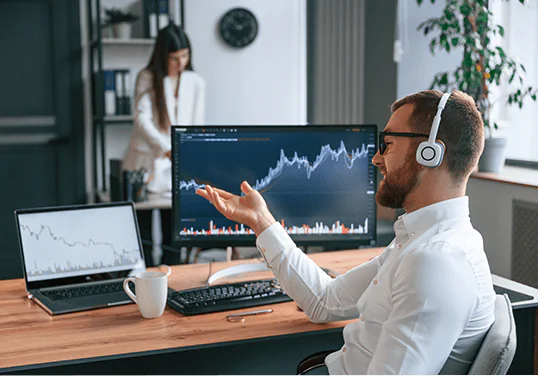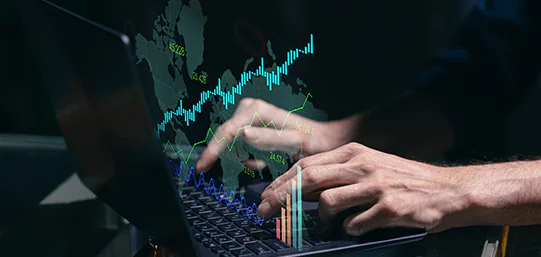Otthon Start Program


Otthon Start Program is designed to help people seeking investment education. The website fast-tracks linking investment education firms and learners, reducing the hours, days, weeks, or months this connection process may take these entities without Otthon Start Program’s help.
The website accommodates people with different educational and technical backgrounds, locations, experiences, and statuses. Otthon Start Program caters to every intending investment learner as it segregates no one. The Otthon Start Program team also constantly tries to reach more people to get investment education.
For everyone aiming to acquire investment knowledge, Otthon Start Program is open 24/7 for registration and connection to investment tutors, to. To register and connect for free, people should click the sign-up button to submit their names, email addresses, and phone numbers. Following this, representatives from investment education firms will contact those connected to them to share important information.


Otthon Start Program does not connect people to investment education firms to make them investors or traders. Yet, by gaining investment education, people can develop an investor’s mindset, thereby visualizing issues, taking cautions, and making critical decisions based on the knowledge, skills, and experience gathered.
People who have a strong flair for learning can get more knowledge by registering on Otthon Start Program to connect with investment education firms.
These firms will assign tutors to teach this set of people their desired investment topics or choose from the list of predesigned topics to enhance their knowledge.
Through investment education, people can start to view issues from fresh angles and provide solutions to complex and unclear issues with the knowledge gained from their investment classes.
Investment education does not only address financial or investment issues but also issues in other aspects of life. Register on Otthon Start Program to learn about investments with suitable education providers.


Several years back, the discussion of the relationship between investment education and technology would have been nonexistent. However, as the world advances and technology grows, there is a recognizable shift in how people approach education. Now, the technology can be used to share useful learning materials, hold classes, and conduct assessments virtually.
Otthon Start Program also uses technology to bring investment education to people’s doorsteps by connecting them to financial teaching institutions to learn about investments. This process saves time. Begin an investment education using Otthon Start Program to connect with suitable investment tutors.
Investment terms are numerous; learning them all may take a while. However, they can be studied in bits, and investment tutors can ensure that. In this section, we discuss a few of them, and learning them will be a good start.

A mutual fund is the money gathered from several investors and spent on several securities. These securities are put in a single portfolio and are managed by a money manager. Mutual funds are managed actively, accruing high fees and expense ratios. The two major classifications of mutual funds are open and close-ended funds.
Open-ended mutual funds involve the direct sales between a fund company and an investor, giving no limit to the number of issuable shares. Close-ended funds issue a certain share number, preventing the issuing of new shares due to an investor’s demand growth. ETFs are funds traded on exchanges and focused on tracing an index. While ETFs are also pooled investment securities like mutual funds, they differ because mutual funds trade once daily after the market closes.
ETFs often use a passive investment strategy and require lower broker commission and expense ratios. Types of ETFs are inverse, passive, industry, currency, active, bond, commodity, and stock ETFs. ETFs can manage risks through diversification but are illiquid. Register on Otthon Start Program to discover more on both mutual funds and ETFs.

An investment is any asset or security a retail, institutional, or accredited investor purchases (using investment strategies) and manages to try for financial returns. Associated risks, market volatilities, or economic conditions influence investment returns. Sometimes, the highlighted conditions may cause an investor to lose massively.
Securities include stocks, bonds, cash or cash equivalents, options, derivatives, mutual funds, real estate, exchange-traded funds, and cryptocurrency. Likewise, some risks affecting expected returns are liquidity, market, concentration, business, currency, and interest rate risks. Below, we discuss some factors affecting investment return:
An investor's risk tolerance signifies the level of risk they can accept or withstand. An investor with an aggressive risk tolerance can bear high-level risks associated with investments that may yield high returns. Also, an investor with a moderate risk tolerance can only invest in assets that allow them to take minimal risks.
Market volatility is assets' unplanned upward or downward price movements. While upward movements can favor an investor through increased returns, downward movements can drastically reduce returns or result in losses. Economic, political, and industrial factors often cause market volatility.
Investments often carry costs that can affect returns. Some investing costs are loads, advisory fees, commissions, expense ratios, and market costs. The costs associated with each investment differ from one another. For instance, lower-cost funds may yield higher returns than those with higher costs. Register on Otthon Start Program to learn ways to reduce investment costs.
Tax deductions can influence a reduction in investment returns. High taxes can reduce returns to a large extent, while low tax charges may minimize the reductions in returns. Join investment tutors in class to learn more about investment returns. Register on Otthon Start Program to start.
Market trends show investors market movements and their impact on a company's perceived stock value. A market trend analysis allows investors to identify trends influencing a company's growth. Government policies, supply and demand, investor sentiment, emotions, and economic conditions often influence market trends.
Duration and direction of movement can determine a market trend type. For the movement duration, market trends last by the strength of the triggering factors. The duration of market trends includes minor, primary, secondary, and secular trends. The direction of market trends depends on the trend going sideways, taking a bullish trend (upward move), or a bearish trend (downward move).

Minor market trends last only a few hours or days. Sudden buying and selling, big purchases, and earnings reports can drive minor trends.
Primary market trends remain between a year and three years and are often initiated by political changes, economic expansions, economic shrinks, and business cycles.
Secondary trends last a few weeks and months, resulting from consolidation periods and market participants' sentiments. Secular trends last between five and 25 years and are influenced by cultural changes, technological development, and economic growth.

Market trends take a bullish turn or upward movement when there is a prolonged rise in the market or asset prices, often caused by positive economic conditions, surplus demands, and increased gains. A downward movement occurs due to a retained fall in market or asset prices. Unfavorable economic conditions, reduced gains, and less demand influence this bearish turn. Sideways movements represent stability in asset or market prices. Want to learn more? Register on Otthon Start Program.
At the beginning stage, trend analysts outline the aims to achieve and issues to address. Then, the analysts gather past data reflecting current trends being examined.
These processes begin with cleaning gathered data to identify inaccuracies. It then formats the cleaned data for analysis and representation on visual elements like scatter plots and line charts to view data patterns and trends.
Time-series analysis focuses on time-based data. Time-series analysis identifies patterns over several intervals by examining long-term trends and identifying seasons.
At this stage, the analysts choose a method for analyzing the data gathered. Some available methods are regression analysis or statistical methods.
Trend analysts define KPIs that match the objectives created at the start by paying attention to variables that match the purpose of the identified trends.
This stage involves segmenting data into categories. Segmentation aids trend analysis within subgroups to discover patterns or variations. Discover other steps involved in trends analysis by registering on Otthon Start Program.
We all get exposure in different ways, and acquiring investment education with Otthon Start Program's help is a major part. Investment education exposes people to different investment processes and strategies. Otthon Start Program ensures people get enlightened on financial concepts and principles by connecting them to investment education firms. Register to connect and learn.

| 🤖 Registration Cost | Free |
| 💰 Fees | No Fees |
| 📋 Registration | Simple, quick |
| 📊 Education Focus | Cryptocurrencies, Forex, Mutual Funds, and Other Investments |
| 🌎 Supported Countries | Most countries Except USA |


